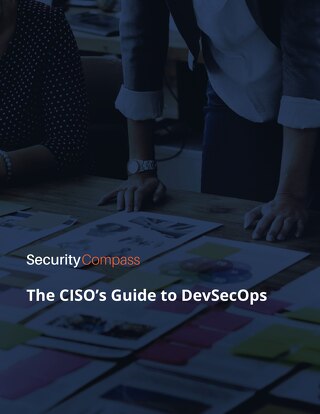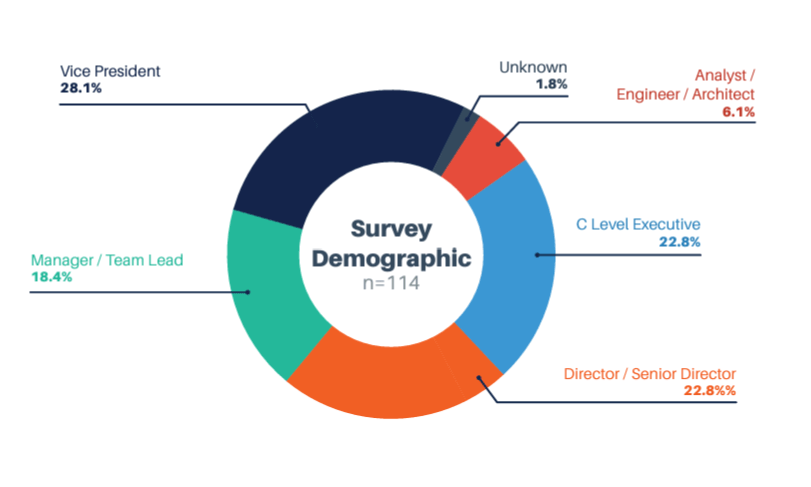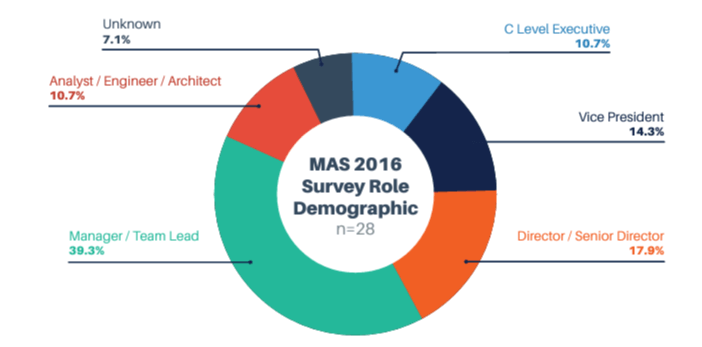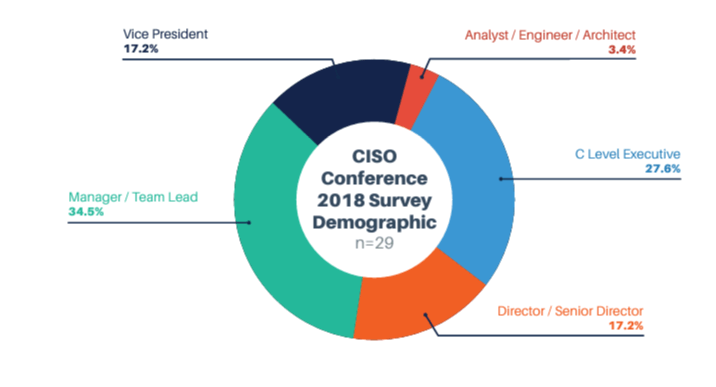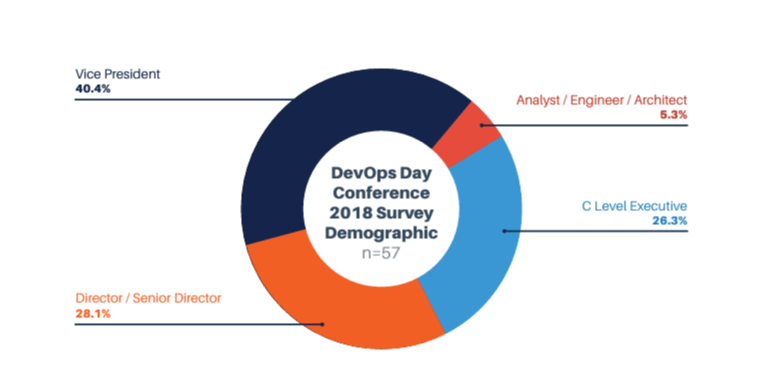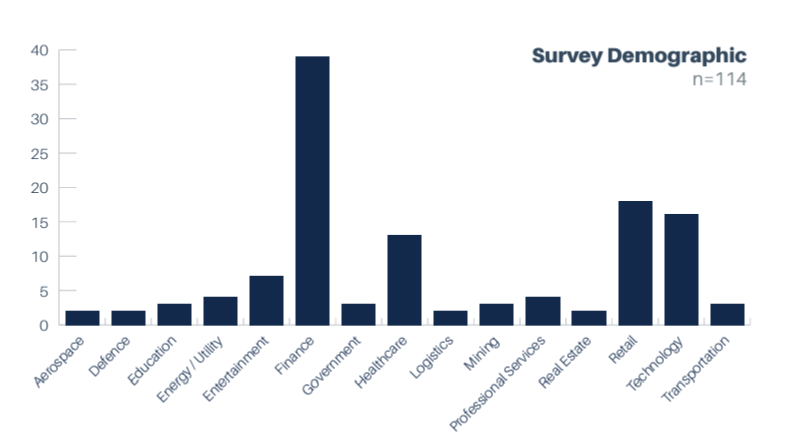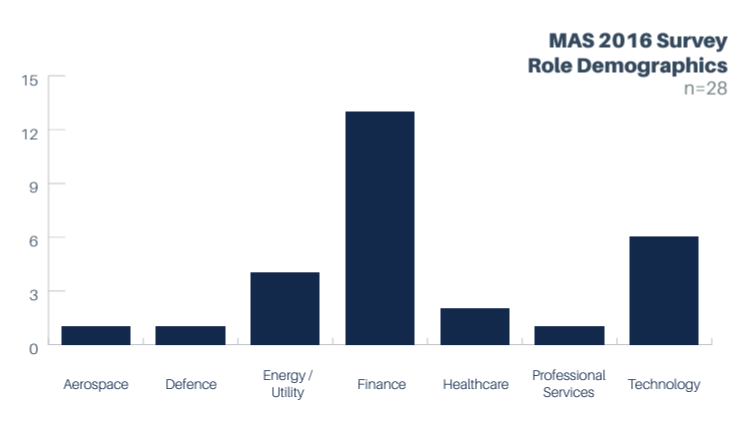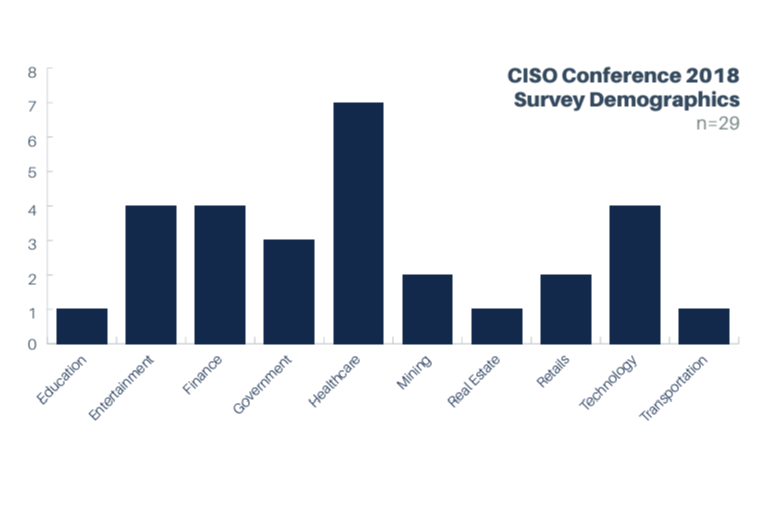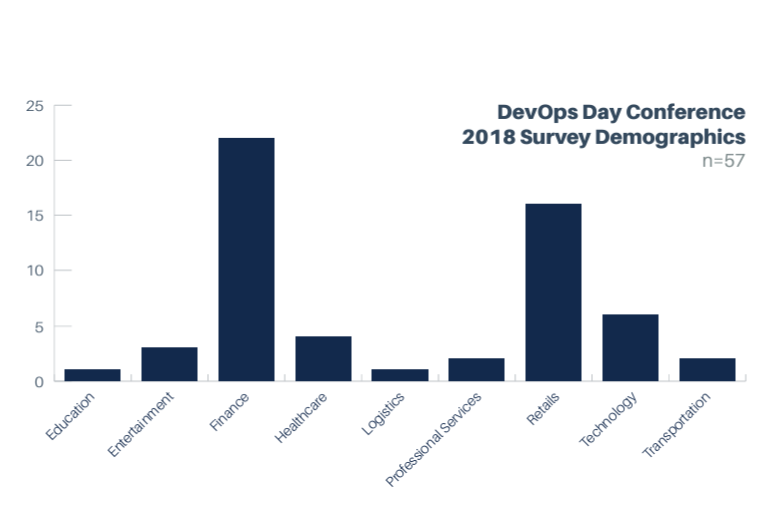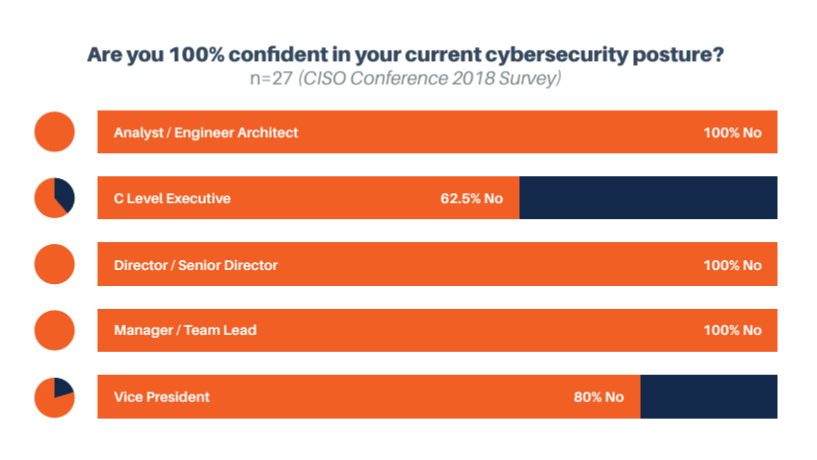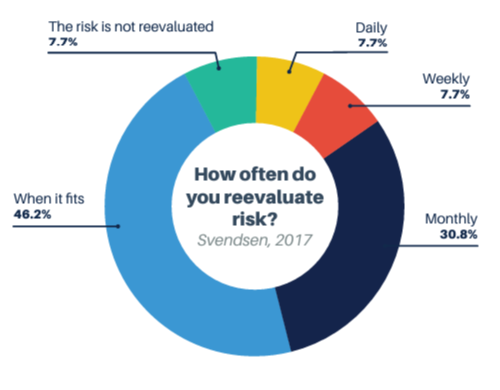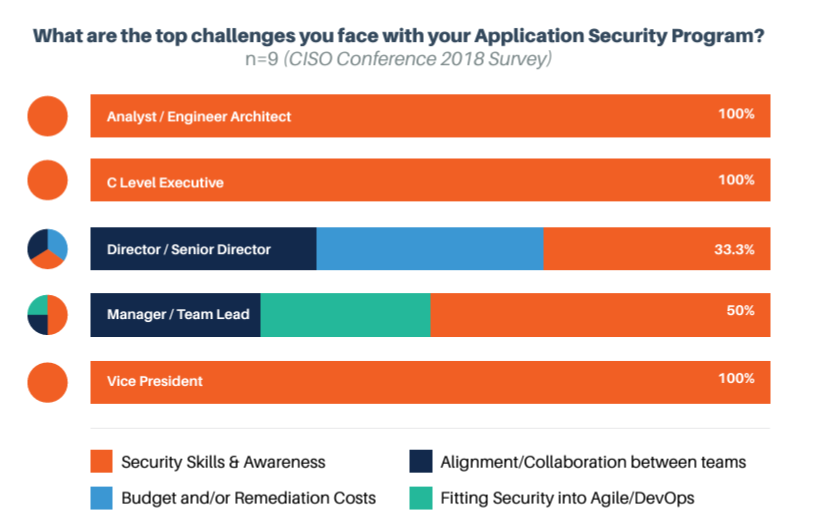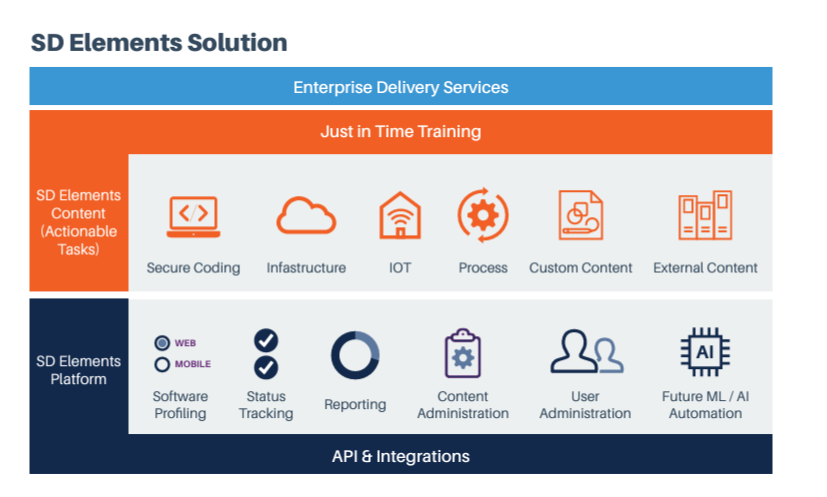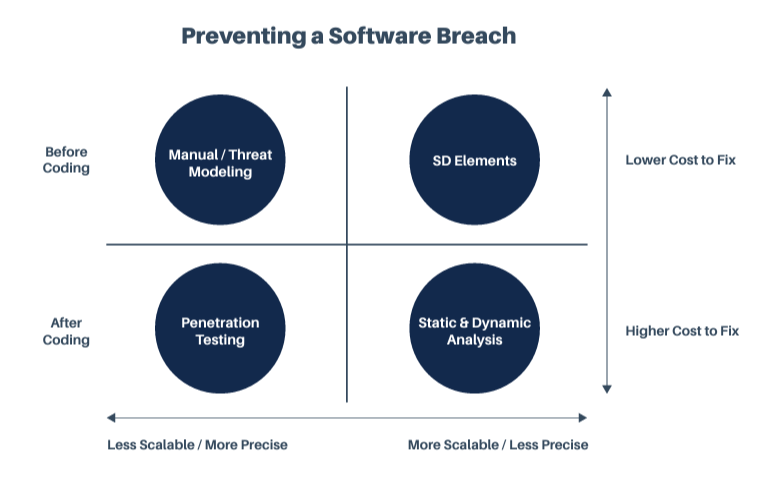Methodology
Since we are trying to understand the DevSecOps space a little better, the nature of this research is observational. We are trying to discover insights in an open-ended way so that we can eventually derive models and frameworks that can help us better understand the challenges associated with DevSecOps and be able to respond effectively. In that sense, this research is deemed exploratory. We are not yet at a stage where we have globally accepted empirical models for software security. The very nature of this problem is extremely complex. What we are trying to do here is to focus on a very specific area of that vast problem space- namely, how DevSecOps can improve software security. Historically, a lot of discussion in software security has been focused at the project level. We emphasized code scanning, penetration testing, exploratory functional testing, and so on. Today, that discussion has shifted to the program level. We are now interested in scaling up those project-level security initiatives. The challenges that emerge from this are rooted in coordination, training, program management, risk, compliance, and so on. With this in mind, our research will focus on role-based perspectives. We feel this is important because, in order to achieve alignment, we need to better understand these different perspectives from the project level to the program level and all the way up to the portfolio level.
Demographic Distribution of Secondary Sources
In addition to the survey data that we collected, we also reviewed recent journal articles and conducted interviews. Most of these secondary sources are from recent years. This was a deliberate attempt to understand where the most recent and pressing needs are within the DevSecOps discussion. Where articles were used, we chose to emphasize peer-reviewed articles as a further check against the quality of our research.
Demographic Distribution of Surveys
As mentioned earlier, because we are focused in this research on DevSecOps and alignment, it is important to understand the perspectives of different roles from the project level to the program level to the portfolio level. Not only that, but we felt it was important to obtain data from a number of different industries so the data would not be skewed.
Our surveys were opportunistic surveys. We did not conduct a random sample but rather obtained data from our customers and from conference attendees. We found this to be a highly effective way of obtaining data that is oftentimes difficult to extract when using a random sample.
SURVEY ROLES
We utilized three surveys for this research. Overall, we were looking for a reasonable distribution across project, program, and portfolio level roles. Below is the combined distribution for all three surveys:
Each data set was further examined to ensure that we did not have the same role overemphasized across all data sets. Below is the distribution of roles across each of the surveys.
SURVEY INDUSTRIES
A number of different industries were represented in our surveys. The largest groups were Finance, Retail, Technology, and Healthcare.
The following charts show how various industries were represented within the individual surveys:
Pt. I: The Importance of DevSecOps
In transitioning to a modern development environment, organizations face many challenges related to software security. As the number of security-related incidents continues to increase, security professionals face growing pressure to respond. However, they cannot handle the overwhelming demands on their own. Security and compliance teams do not communicate with DevOps teams, yet this line of communication is essential for ensuring that security is adequately addressed in an agile environment. As such, many organizations recognize the need for a paradigm shift regarding the way security activities are managed.
The ideal outcome of such a shift would be to have software teams that act in alignment with business goals, understanding that security practices are integral to business success. A DevSecOps environment is one wherein security is embedded into the DevOps process in a standardized way. Such an environment hinges on crossfunctional teamwork, bringing together the roles and responsibilities of technical teams, business teams, and security professionals to operate more efficiently. As organizations strive toward a DevSecOps environment, program-related efforts start to take priority over project-related efforts. Many such programs include Security Champions, application security program planning and management, as well as the implementation of automated security processes, such as policy-to-execution platforms. These programs all contribute to crossfunctional team alignment and maximum organizational efficiency surrounding security.
In our research process, we set out to explore two key questions:
The first question that guided our research was: ‘What are the current challenges in implementing a DevSecOps program?’ To answer this, we identified the gaps between the way security practices are typically conducted versus the way security practices must be conducted in organizations in order to meet environmental demands.
The second question we asked was, ‘Which components of a DevSecOps program address these challenges?’ To answer this question, we identified all technical and cultural loose ends that needed to be addressed in order to effect a fundamental, sustainable change in the way security is managed. We also identified which specific tools and services can be leveraged to facilitate program-level DevSecOps incentives.
In this report, we use qualitative primary and secondary research, exploring our own surveys, as well as 3rd party surveys, journal articles, and interviews with industry analysts, to generate an idea of the challenges organizations face today. In conducting this research, we started with the assumptions that organizations want to move faster, that business and technical teams need to be aligned in order to move faster, and that DevSecOps is an important initiative for those organizations seeking to achieve such an alignment.
Pt. II: Key DevSecOps Challenges and Barriers to Success
Though we have not yet reached a point where we have globally accepted empirical software security models at our disposal, we were able to identify notable gaps in DevSecOps discussions. To start, we identified the two main pressures driving software security forward: these were market pressures and regulatory pressures. The state of current market pressures is such that software release cycles are faster than ever, creating an urgent need to keep security practices up to speed. Survey data from very large organizations across various roles confirms that this is a problem most acutely felt by project and program teams.
The state of current regulatory pressures is such that legal security and compliance mandates are becoming more stringent, imposing new penalties on organizations that do not abide. In the face of these pressures, particular security gaps have become manifest. That is, discrepancies have been identified between the current state of security in organizations versus the needed state of security. These gaps and their related challenges are reviewed below.
Lack of Assurance
Assurance is defined as the extent to which you can ensure that security is being adequately addressed in your organization. This can be accomplished, for instance, through reports, training, incident response plans, or disaster recovery plans. Our secondary research has shown that, in general, industry assurance models are lacking. That is, there are no standardized procedures for ensuring that your organization is adequately practicing security. Of the existing assurance models, they are mainly high-level constructs, like ISO 27001. So, there are adequate models related to governance, but only a few that are related to the specifics of secure application development. The lack of acceptable assurance models has had a trickle-down effect, leaving a gap where business and project assurance is needed. Only ~50% of CEOs believe that they are well-prepared for a cyber attack1, and project-level teams are skeptical about their current cybersecurity posture, more so than their senior executives are.
Whereas 100% of managers, directors, analysts, engineers, and architects reported that they were not entirely confident in their cybersecurity posture, only 62.5% of C-level executives and 80% of VPs agreed (CISO Conference 2018 Survey). These studies reflect the general belief that there is a lack of security assurance at the lower levels of business. In a 2017 study run by Svendsen, it was found that the vast majority, 46%, of organizations re-evaluated risk “only when it fits,” while 7.7% said that they did not re-evaluate risk at all. The reported reasons for infrequent risk re-evaluation were lack of knowledge (46.2%), followed by lack of time (30.8%), and lack of budget (23.1%).
Unfortunately, however, O’Neill states, “industry and government continue to increase dependence on software” that is “critical” to the nation’s “infrastructure and defense industrial base.”3 Hence, a successful DevSecOps program would need to provide clear communication across roles and different levels of business so that security is managed effectively. It would also need to offer a way to concretely demonstrate resilience and risk reduction in business. With new, more stringent assurance standards, like the PCI SSF, on the horizon, organizations will need to better prepare in order to protect themselves from legal penalties. Not only will they need a way to ensure that they are thoroughly compliant with current standards, but they will need to do so efficiently, adopting automated methods, if necessary.
Lack of Quality:
Many efforts to improve software quality focus on process improvements and better integration. However, we don’t often see security being characterized as a constituent of quality improvement. Additionally, quality assurance teams struggle to provide the necessary assurance to businesses that the software being released is secure. Though code scanners are a commonly used security tool, they tend to produce false negatives or failures to alert users when there are, in fact, security defects in code. A 2016 case study revealed that scanners, on average, missed over 50% of security defects. Yet, a 2017 Security Compass survey revealed that static analysis was one of the top three security activities relied upon by large organizations. Lacking or outdated security documentation further compounds the problem because there is no clear source of truth on the security posture of applications. As organizations’ applications become increasingly complex and distributed to provide greater scalability and functional performance, the number of pathways through an application also increases, creating greater potential for security defects. In the future, DevSecOps programs will need to devise methods to address security at scale in complex application environments. DevSecOps programs will also need to find an efficient, program-based way to rigorously uphold security documentation to improve release quality, treating security as a first-order attribute in quality discussions.
Organizational Barriers:
Organizational barriers present a major challenge when it comes to establishing a DevSecOps program. These barriers include a lack of stakeholder collaboration, difficulty integrating security into existing Agile and DevOps processes, and lack of accountability surrounding security tasks.
Firstly, there’s a lack of consistent terminology and understanding about security-related matters amongst stakeholders. As Ramadan points out, “such loopholes may be hard to detect since traceability mechanisms for security requirements across the different phases are usually not available.” That is, “…vulnerabilities may arise from misunderstandings between…stakeholders, in particular, due to the divergent use of terminology.”
Secondly, organizations generally experience difficulty integrating security into existing Agile and DevOps processes. In fact, more than 25% of surveyed companies expressed that they were willing to adopt DevOps but hesitant to do so due to security and compliance concerns.
Many organizations report a lack of accountability regarding security tasks. In order for a DevSecOps program to function, security must be a priority for everyone. When it came to assessing the priority levels of different members in organizations, analysts, engineers, and architects felt most strongly that achieving software security in a DevOps environment was important. Directors, Vice Presidents, and C Level Executives all rated achieving software security as a lower priority relatively. Thus, in order to improve security accountability in organizations, there needs to be a common set of metrics or traceability mechanisms for stakeholders to collaborate on, as well as a way to seamlessly integrate ‘shifting left’ into the development process.
LACK OF SKILLS:
When it comes to security practices, there is a lack of skills among developers and customers. In fact, customers don’t know where to begin asking questions related to security. As Bartsch explains, “Non-technical customers often cannot comprehend the technological basis of each security measure.” To add, “acquirers complain that they don’t know how to ask for secure code from vendors.” As a result, if organizations are reliant on customers providing the security requirements, the list will very likely be incomplete.
An even more imminent issue is that developers lack security skills. As O’Neill states, “best practices are insufficient,” and standard development education doesn’t have enough emphasis on security. And, as Kuper points out, “current remediation techniques are ineffective,” with too large of a time window between vulnerability discovery and patching. In the CISO Conference 2018 Survey, analysts, engineers, architects, C-level executives, and vice presidents all listed security skills and awareness as the top challenges faced in their application security programs. This challenge stood out above budget challenges, team collaboration challenges, and challenges related to fitting security into the Agile or DevOps process.
A successful DevSecOps program will need to promote secure coding training while finding a way to deliver relevant and easily-understood security requirements for customers to help them better understand security and avoid high remediation costs.
INSUFFICIENT GUIDANCE:
When it comes to implementing a DevSecOps program in organizations, there is the challenge of insufficient guidance due to a general lack of security resources, standards, and research. Organizations have generic security guidelines but nothing to guide their specific implementation of security measures. By extension, there is a general lack of security standards. In some industries, no security standards exist. As a Senior Software Engineer at Valeo Radar Systems Inc. Andrew Laffin explains, “industry and government have not yet coalesced around [security] standards.”
Even more concerning is the lack of a rigorous body of research to draw from. Jaatun explains that security research is far from adhering to an established scientific approach, as we see in other scientific domains. “The area,” he says, “suffers from a lack of credible empirical evaluation.” He goes on to say that “there is little evidence [showing] how to implement security practices in the software industry, much less in an agile context.”
INCORRECT ASSUMPTIONS:
The challenge of incorrect assumptions boils down to a false sense of security in organizations. It’s often the case that organizations assume they are sufficiently secure simply because they haven’t yet experienced an attack. As Jaatun states, “A major problem in software security is that it is impossible to know all attacks that the system will be exposed [to].” In fact, he says, “uncovered vulnerabilities remain unresolved, often for many years,” thus breeding a “false sense that software security is not a big problem” and resulting in the lower prioritization of vulnerabilities compared to other software defects.
Alternatively, some organizations assume that filling out the compliance checkboxes means that they are secure when, actually, compliance is the starting point. When organizations’ employees only take security training “because they have to,” not needing to understand it because it lacks ostensible relevance to their job, “it ends up becoming a checkbox [they] have to tick,” says Jim Bird, CTO of Bids Trading Technologies Ltd. Actually, being compliant does not necessarily mean that applications are secure and organizations are immune to attack. In this case, the use of a policy-to-execution platform can account for all known vulnerabilities before development even starts, reducing the potential for incorrect assumptions about the security of applications.
There’s also the issue of completely bypassing security to the point that it becomes second nature. When users experience no consequences as a result of this behavior, they assume that it is acceptable. As Pfleeger explains, “Paradoxically, security systems have conditioned many individuals to respond to security cues by ignoring or bypassing them whenever possible.” That is, the security systems have encouraged bad rather than good security habits.
Pt. III: Overcoming DevSecOps Challenges
To address the challenges described so far, we suggest creating a DevSecOps Application Security Program that focuses on filling the identified gaps. The areas of focus include the establishment of a governance model and mapping to business needs, the development of a collaborative security culture, and the creation of a secure development pipeline with highly automated processes, including a policy-to-execution platform. We define and elaborate on these program aspects below.
Policy-to-Execution Platform Defined
A policy-to-execution platform is a technology that translates security policy into actionable tasks that developers can complete to ensure their applications are secure by design. Security and risk teams produce policy as their output. These policies are then given to development teams, who are responsible for interpreting the policies and turning them into procedures. Every policy, however, is open to nuances and interpretations, leaving a degree of ambiguity between policy and execution. A policy-to-execution platform fills this gap. Using such a platform, policy teams can define and communicate risk policies for their applications based on regulations, industry standards, and internal policies. Once applications are onboarded to the platform and the risk policy is set, translation is done for development teams, giving them specific, actionable guidance about how to build controls that comply with the policy. This means less time is spent trying to interpret what the policy means, and more time is spent working to improve security. Of all existing security approaches available to organizations today, policy-to-execution platforms are the most scalable and comprehensive option.
Creating an Adequate Governance Model
Creating an adequate governance model means having the right roles, processes, and controls in place so that every level of the organization can practice security with confidence. Executing this requires thorough program planning and management. Michener points out that to start, security tools should be run on the code to maintain quality and validate that any changes made are reasonable. By extension, developers should log their actions to ensure that traceability and accountability are upheld. Furthermore, the development environment should be able to track all changes for forensic purposes in the case of a data breach. To support the adherence to this new governance model, organizations need to clarify who will be designated to these responsibilities.
Mapping to Business Needs
Above all, a DevSecOps program should align with business needs. This alignment typically centers around digital transformation, which entails risk management and compliance. As the Founder of ThinkSec, Frank Kim, states, “The whole reason DevSecOps exists [is] to drive business value faster.” He goes on to say that “incentives need to be in place so that each team has a reason to care about DevSecOps as it relates to the overall business goals.”
While a major priority of DevSecOps is to drive business value, many organizations have vastly different priorities and perspectives on which are the most crucial business drivers. In fact, a recently published research report revealed that 27% of business executives believed security investments had a negative return on investment (ROI). IBM Security provides a background context for this negative mentality, claiming that ROI on security is “the trickiest metric.”
Nevertheless, the ROI on security can be approximated. The budget for security usually falls somewhere under an organization’s IT budget, which is controlled by the Chief Information Officer (CIO). The CIO’s main concern is that IT spending helps to achieve business outcomes. Given that security investment has the capacity to affect business outcomes, there is a business case for it, and this usually centers around loss prevention. On one end, organizations rely heavily on technology, and if these systems go down as a result of a cyberattack, it may result in a significant loss of revenue. Additionally, having security practices in place reduces the cost of compliance audits, the penalties for which are only becoming more stringent. Even some degree of security implementation can ameliorate matters in the event of a breach since the demonstration that security best practices were followed in good faith can reduce the penalties. On the other end, developers who face stalled release cycles as a result of last-minute security tasks will also benefit from a standardized security system that embeds security controls into software earlier in the software development lifecycle. Lastly, an important consideration is which security tools are part of the investment, as some security tools are significantly more reliable and efficient than others.
Fostering a Security Culture
When it comes to changing organizational processes, people are one of the greatest challenges. One of the major people-related challenges is encouraging different departments that have never previously collaborated to start collaborating more. Kim suggests having a DevSecOps evangelist to encourage these new collaborations. Such an individual can explain the importance of security because, as Alex Smolen claims, “if you can’t do this, you’ll have a hard time because people won’t collaborate with you.” He goes on to say that “security is an important part of the business, and so everyone from the CEO down should understand this is a part of their job.” Jim Bird suggests building a culture of continuous improvement through friendly competition, claiming that “if you set healthy challenges for people to try and create systems that cannot be broken by pen testers, you end up making this part of their responsibility… it sets the benchmark to go after real problems, not theoretical problems or checklist issues.”
Another part of building a security culture involves training developers in security. As Pfleeger outlines in her article, failure to adapt to new work demands is usually a result of ambiguity in what needs to be done, vague target goals, and too much demand for change at once. Hence, to sidestep these roadblocks, security training must strategically avoid them. One solution is to develop security training that acknowledges the long-term focus required to build a talent pipeline. According to Andrew Laffin, a senior software engineer at Valeo Radar Systems Inc., “when you hire somebody,” you should expect “to spend 2-3 years training them. Building out good intake training programs is a good way to address the talent gap.” This long-term mindset ensures that developers aren’t overloaded with too much work at once and that any ambiguities in their work tasks can be clarified, given the reasonable timeframe within which they can learn and experiment.
One approach taken to foster a security culture in organizations is the development of a Security Champions program. Research indicates that existing computer-based security-awareness programs cannot effect the change needed. Security Champions programs take security awareness one step further, designating one member from a development team to be the ‘Security Champion.’ This developer acts as the security conscience, leading all security activities on the development side. They help to build a relationship between the security and development teams while facilitating all necessary communications. They head security-related improvements on their own development teams, and according to the 2017 OWASP Summit, most survey respondents hold Security Champions responsible for security updates, training, threat modeling, risk reporting, and mentoring. The designated Security Champions are trained in security and must meet a specific set of criteria in order to earn this role. Champions are provided with instructor-led training and appropriate course materials to become adequately trained. There are also incentives to become a Security Champion, which may include annual raises, potential for career growth, and other recognitions.
Creating a Secure Development Pipeline Using Automation
Scaling out means building the critical CI/CD pipeline to operate continuously in order to achieve consistency and quality. As indicated by our Security Compass 2017 survey, 66% of C-level executives, 60% of directors, and 50% of vice presidents felt that standard tools not working well was a challenge to rolling out an application security program. Industry researchers suggest incorporating several CI/CD elements across the software lifecycle. Some of these include continuous planning, security requirements analysis, architectural risk analysis, static analysis, dynamic analysis, continuous deployment, configuration management, and production support, to name just a few.
As Smolen states, “Automation is a really important concept for turning your desires into actual cause/effect behavior in the real world.” As a starting point, it’s important to build compliance automation. Compliance is the minimum threshold organizations should strive to meet. Once compliance is met, the goal should be to continue improving it. Farroha suggests automatic reporting for compliance violations, whereby access is terminated when a certain threshold is surpassed, and alarms are set off when a new policy is not accepted. The automation aspect is important because, as Smolen states, “as security teams mature, they should be looking for ways to take policies and intentions” and to transform those “into what runs regularly.”
MANUAL VS. AUTOMATED SECURE DEVELOPMENT TOOLS
In general, there are four main approaches to secure development. The manual approaches include person-driven threat modeling and traditional penetration testing. The automated approaches include policy-to-execution platforms, like SD Elements, Static Analysis Security Testing (SAST), and Dynamic Analysis Security Testing (DAST). Comprehensive approaches include manual threat modeling and penetration testing. These approaches, however, are time-consuming and slow to scale. The most scalable options are policy-to-execution platforms, SAST, and DAST. Static and dynamic analysis, however, are often inaccurate and thus costly in the face of security defects. Of all approaches, policy-to-execution platforms are the most scalable and comprehensive in security coverage. The diagram below outlines all approaches.
Pt. IV: In Conclusion
The question of how a DevSecOps program can improve software security practices in organizations is unprecedented and highly complex. The rapidly changing dynamics of development environments are creating an urgent need for organizational change. This is part of the reason why we see the emergence of DevOps environments, which are inherently cross-functional and more collaborative. As applications grow in number and complexity, the potential for vulnerabilities amplifies, and security becomes more crucial than ever. At the same time, business requires the speed, agility, and continuous improvement that DevOps practices can offer. As such, it’s important to consider the possible solutions that a DevSecOps program could offer. Through our research, it was evident that security understanding generally needed to be improved amongst employees, especially developers, and that this understanding needed to be improved in a systematic, efficient way to keep up-to-speed with development release cycles. At the core of the DevSecOps solution, therefore, is access to security support and learning that’s offered in a highly automated fashion. As organizations transition to DevOps environments, it will be important that program-level efforts include more comprehensive governance models that map to business needs, collaborative security cultures, and secure development pipelines that leverage policy-to-execution platforms where necessary.
Security Compass is a company focused on helping companies lower their cybersecurity risk. We offer SD Elements, Advisory and Pen Testing services, and Security Training. Our mission is to build a world where software can be trusted. To find out more about Security Compass or about our platform, SD Elements, please contact us here.








